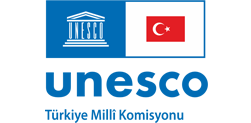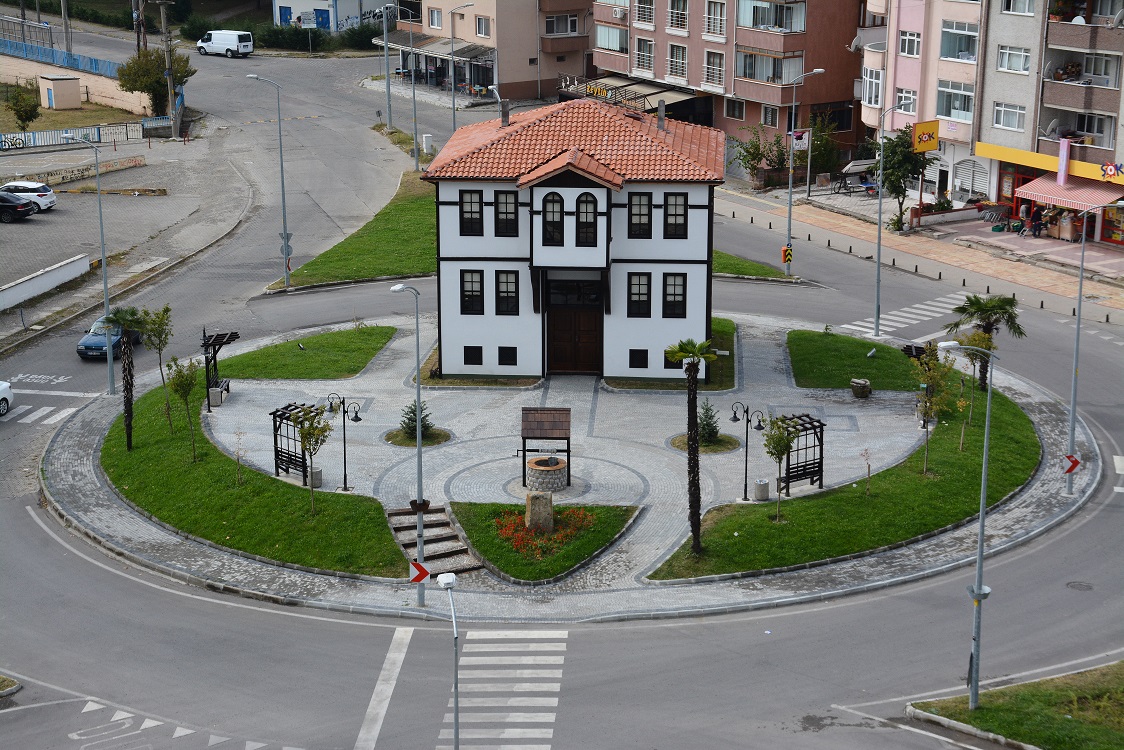
-
 About Us
About Us Detailed information about Zonguldak Coal Geopark and more...
About Us
About Us Detailed information about Zonguldak Coal Geopark and more... -
 Enjoy
Enjoy
-
 Discover
Discover Discover Zonguldak Geoparks
Discover
Discover Discover Zonguldak Geoparks -
 Learn
Learn
-
 Activities
Activities
-
 GeoNetwork
GeoNetwork
-
 Contact Us
Contact Us


Museums and Exhibitions
Zonguldak Mining Museum and Coal Experience Quarry (Center)

The Mining Museum was established to introduce the story of approximately 200 years of hard coal mining in the province of Zonguldak. Documents of hard coal mining, newspapers reflecting the developments of the period, tools used, communication tools and mining technology of the period, hard coal and coal types and fossils are introduced.
Zonguldak Mining Museum was opened on December 9, 2016 and has an area of 6,932.79 m2. In the mentioned area, besides the museum building, there is the Education Quarry, which was the mining education center of the period. The museum building consists of a foyer, exhibition halls, meeting hall, warehouses and administrative unit rooms. In the second floor showcases, materials related to occupational safety, topography, health, social care and educational books are exhibited. Coke derivatives of the third layer of coal, fossils and the formation of coal are explained. In addition, with the Coal Experience Quarry, which will start operating in 2022, it will be the first and only area in Turkey that will provide the coal mine experience. To have this experience, be sure to visit the Zonguldak Mining Museum and Coal Experience Quarry.
Karaelmas Mine Martyrs Museum (Center)

The project prepared by the Turkish Hard Coal Authority (TTK) was made ready with the support of the Western Black Sea Development Agency (BAKKA). The Karaelmas Mining Martyrs Museum, where the establishment process of the TTK is explained, the belongings of the miners who unearthed the "black diamond" and many documents from various periods are on display, awaits its visitors.
In the Üzülmez District, the museum, which was used as the home of the Üzülmez Institution Manager and opened on December 30, 2020, sheds light on the mining history of the city. In addition to the establishment process of Ereğli Coal Enterprises (EKİ), the nationalization of the coal companies in the city and the establishment process of the TTK, the living and working conditions of the miners are explained in the museum, the exhibition rooms with mining materials, the virtual reality where the underground is toured, and culture and art. It has rooms.
Zonguldak Bulent Ecevit University Tahir Karauguz Exhibition (Center)
The exhibition was opened in Zonguldak Bülent Ecevit University Tahir Karauğuz Conference Hall on June 4, 2012. In the exhibition, personal belongings, typewriters, photographs, copies of Zonguldak Newspaper and Karaelmas Magazine belonging to Karauğuz, one of the first journalists of Zonguldak and the first person to use the name "Karaelmas", are exhibited. The museum reflects the change and development of the city in the field of press.
Zonguldak Bülent Ecevit University Mine Cartography Exhibition (Center)
The exhibition, created by Zonguldak Bülent Ecevit University Geomatics Engineering Department, is located in the classrooms building of the Faculty of Engineering. In the exhibition, maps related to Zonguldak mining, measuring instruments used in this area, cartographic equipment, account books, documents, mine production and triangulation maps are exhibited. Other artifacts related to the city's 190-year mining history are also included in the exhibition.
Zonguldak Bülent Ecevit University Biology Exhibition (Center)
The exhibition, prepared by the Department of Biology of Zonguldak Bülent Ecevit University, was opened to visitors on 1 June 2011. Various animal and plant specimens are preserved and exhibited in the exhibition. There are more than 1,000 living specimens of more than 200 species belonging to invertebrate and vertebrate groups in the exhibition. The main purpose of the exhibition is to reflect the diversity of living things. The exhibition also has Turkey's largest collection of mammals, with over 12 thousand mammal specimens.
Gazi Alemdar Ship Museum (Kdz. Eregli)

With the start of the First World War in 1914, the right to operate the coal mines was given to the Germans. Angry at this, the Russians bombarded the Black Sea Ereğli coasts frequently for 2 years. After the World War II, with the occupation and sharing of Anatolia by the European states, the French came to Black Sea Ereğli but could not occupy it. A small warship named Alemdar, which was kidnapped by patriots from occupied Istanbul during the War of Independence, was intended to be captured by the French, who dominated Zonguldak and the Black Sea. The patriots who brought Alemdar to the Black Sea port of Ereğli on February 9, 1920, put the ship ashore and did not deliver it to the French. The French, who were angry that the patriots took shelter in Karadeniz Ereğli, wanted to occupy the city, but they could not be successful as a result of the struggle of the people of Karadeniz Ereğli.
The French, who bombarded the coastal areas of the city, including the hospital, from the sea, were exposed to a counter-attack as a result of the secret floating of the Alemdar ship. Some French commanders and soldiers, who were taken prisoner by the people of Karadeniz Ereğli on 18 June 1921, had to sign an agreement with the Republic of Turkey, which had not yet been established. This agreement was Turkey's first international agreement in the War of Independence and is an indication of the acceptance of the National Salvation Government. This success, which was achieved as a result of the struggle of the people of Karadeniz Ereğli during the War of Independence, formed the basis of the victories won by the Republic of Turkey. In this way, the first and only naval battle of the War of Independence took place in Black Sea Ereğli. In order to keep this historical event alive, a one-to-one example of the Gazi Alemdar Ship was made and opened as a museum on 08.08.2008.
Kdz. Eregli Museum (Kdz. Eregli)

Halil Pasha Mansion, one of the most important examples of 19th century architecture, is one of the most important sightseeing spots of Zonguldak. In Halil Pasha Mansion, which serves as a museum today, more than three thousand archaeological artifacts dating from the Greek, Roman and Byzantine periods, which were unearthed as a result of archaeological excavations in the city, are exhibited. Grave stelae, figured marble column capitals, various metal objects, glass vessels, jewelry and oil lamps are among the historical pieces you can see in the museum.
The mansion, which was built in the form of a three-storey and sofa plan, was built by Halil Pasha Karamanoğlu, the flag lord of Abdülhamit II. In the mansion, which is located on Bozhane Yalı street and built on the foundation of an old church, antique spoli materials collected from the buildings belonging to the Roman Period were used as chapolyenne (reused) especially for façade decoration. The building, which was also used as a secondary school and a girls' vocational high school for a period, was put into service as a museum in 1998 after a 10-year restoration work. There are archaeological artifacts on the first floor of the museum building, and ethnographic artifacts are located on the second floor. Clocks, rosaries, measuring-weighing instruments, local clothes, weapons, weaving tools belonging to the region are exhibited in the ethnographic section.
Kdz. Eregli City Museum (Kdz. Eregli)

With the support of the Western Black Sea Development Agency, Kdz. The City Museum building, which was opened by the municipality of Ereğli on December 2, 2014, is a masonry building built in the 19th century. It has a ground floor plus two floors. masonry building Kdz. It is known as "Cibiroglu Mansion" in the region, since it belongs to the Cibiroglu family, nicknamed "Misircilar", one of the prominent dynasties of Ereğli. Traditional Kdz. The building, which has the characteristics of Eregli residence, was built by local craftsmen using local materials. The floor of the ground floor, which provides the entrance to the building, is paved with local red stones. In the long entrance hall called “taşlık” in the region, there are wooden stairs that provide access to the floors and partitions (two rooms, one small living room) planned as a soup kitchen (kitchen), warehouse and cellar. On the other floors, there are four rooms. The ceilings of the rooms are covered from above, and there is wooden decoration in the middle part of the ceiling of the second floor. There are hearths/fireplaces in the rooms to the west of the building, and niches in the rooms to the east.
On the floors of the museum Kdz. There are information boards about the historical development of Ereğli and certain places of the district. Kdz. In Ereğli Municipality City Museum, there are daily use items belonging to the century. There are a total of 341 inventories in the city museum, including medical supplies, records, musical instruments, electronic devices, local clothes, metal goods, in short, many daily used materials that you can think of.
Kdz. Ereğli Municipality City Museum is open to the public between 10:00-12:30 and 13:30-17:00, six days a week, except Mondays.
Devrek Walking Stick Museum (Devrek)

In 2016, Devrek Walking Stick Museum and Nature and Culture Park was established within the scope of the project support given by BAKKA to the project of the Zonguldak Special Provincial Administration, and the museum is located in a 35-decare facility that hosts many cultural and social activities. The Walking Stick Museum, where the Devrek Walking Stick, which is the important symbol of Devrek, is exhibited, is an important stopping point that reflects the handicrafts of the district and Zonguldak.
Çanakcılar Private Ethnography and Archeology Museum (Gökçebey)

Kantarcılar House, built by the masters of Safranbolu Bulakli, is an important example of civil architecture that reflects the traditional building culture of Çaycuma. Due to its location in the city center, the house, where all official celebrations and ceremonies are held, also forms the background of old Çaycuma photographs. The house, which was abandoned and demolished by one of the owners of the house, Nihat Kantarcı at the time, during the opening and expansion of Atatürk Street, which connects the station district and the city center, was rebuilt by the Çaycuma Municipality in accordance with its original and put into service as a museum cafe.
